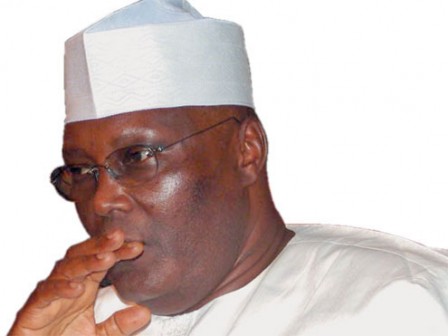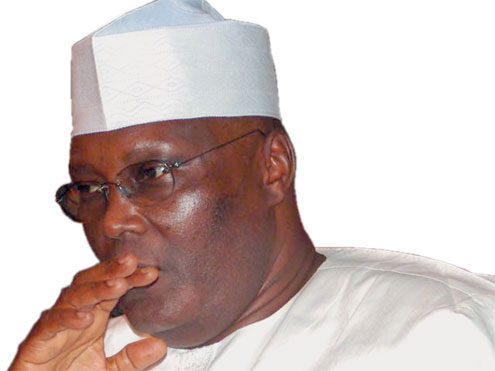13th September, 2018

By Majeed Dahiru
The clamour for restructuring has become heightened in Nigeria today, in a manner comparable to the “On Aburi We Stand” clamour by Nigerians of South-East origin following the unfortunate incidences of the January 1965 coup, the July 1965 counter-coup and mass killings of civilians in Northern Nigeria. To pull the Nigerian nation from the brinks of collapse, the government of Ghana, under the leadership of General J.A. Ankrah, had brokered a peace deal between the Nigerian delegation led by then head of state, General Yakubu Gowon and the Eastern Region delegation, led by then military governor, Emeka Ojukwu. The outcome of that peace effort, which proposed to restructure Nigeria into a confederacy with a relatively weaker central government, was named after the now historic Ghanaian town of Aburi, where the talks were hosted. Like the demands for restructuring today, the Aburi accord was then considered the only basis for Nigeria’s continued existence, unity and prosperity. The failure of the Gowon led Supreme Military Council to abide by the Aburi Accord is generally considered to be the trigger for Nigerian-Biafran 30-month civil war, between 1967 and 1970.
51 years after the agitation for the Aburi Accord, the concept of restructuring appears to have taking centre stage in Nigeria’s political circus again. This is so because the condition that created the circumstances leading to the Aburi Accord are still discernable in today’s Nigeria. Nigeria is as divided in 2018 as it was back in 1966. For many Nigerians, it’s either a restructuring of the country or nothing. However, there are two significant differences between the current clamour for restructuring and the agreements sought through the Aburi Accord. First, unlike the demands in the Accord, which were largely restricted to then Eastern Nigeria region, the current clamour for restructuring permeates a wider spectrum, cutting across the southern half of the country, the middle belt and a significant chunk of the conservative North. Second, unlike the Aburi Accord, which was clear and unambiguous about the need for the loosening of the Nigerian federation into a confederacy of some sort, the current clamour for restructuring is ambiguous, and without clarity of purpose.
With the widespread demands for restructuring, the amoebic politics of Nigeria has adjusted to accommodate this renewed notion, as a buzz word in the political exegesis of the power transition sought in 2019. The opposition Peoples Democratic Party (PDP), which is positioning itself to wrestle power from the incumbent All Progressives Congress (APC), is making a huge campaign issue out of the clamour for restructuring. A former vice president and leading contender for the presidency on the platform of the opposition PDP, Atiku Abubakar has firmly hinged his aspiration on the issue of restructuring. He is one of the significant few from the conservative North championing the cause of restructuring.
By riding on the crest of a renegotiated federation, Atiku is perceived to be making an in road into the political base in the South and Middle Belt of Nigeria, even while the issue of restructuring is fast degenerating into a loose cannon of populism. To check his seeming political gain and Atiku’s restructuring myth as a silver bullet capable of resolving Nigeria’s problem, no less a person than current Vice President Yemi Osinbanjo, has tried to burst this bubble. In describing Atiku’s restructuring plan as vague, Osinbanjo has contended that good governance and not necessarily physical and geographical restructuring is fundamentally needed to solve Nigeria’s problems.
The recent heated exchange between Atiku and Osinbanjo has further deepened the debate around restructuring and related issues. Geo-physical and political restructuring are open ended and continuous processed that have been on in Nigeria throughout the British colonial era into the post independence era, despite the intermittent switches between military rule and civil democratic rule. The amalgamation of the Southern and Northern Protectorates in 1914, with the establishment of the unelected Nigerian Council of Lord Lugard as the governing body, was a process of restructuring. Subsequent colonial constitutional developments that saw the adoption of Clifford Constitution in 1922, which abrogated the unelected council of 1914 and replaced it with a partly elected legislative council for the Southern Protectorate, as precursor to federalism, was a form of restructuring. The Richards Constitution of 1946 that firmly established Nigeria as a federation of three regions (East, West and North) was a continuation of the process of restructuring, which began in 1914. The Nigerian federation was to be further restructured with the adoption of the Macpherson Constitution of 1951, bestowing on the federating units full legislative and autonomous executive structures of governance.
After Independence in 1960, Nigeria went through another round of restructuring. The creation, out of the original federating units of three regions, of a fourth Midwest region, continued the process of restructuring. Also, the January coup and July counter-coup of 1966 were violent attempts at restructuring. And, the promulgation of the Unification Decree 34 of 1966 by then head of state, General Thomas Aguiyi Ironsi, which reduced substantially the autonomy of the four-region federating units, resulted into a restructured Nigeria with a stronger centre.
Beginning from 1967, when Gowon dissolved the four-region federating units into 12 states, which was continued by succeeding military regimes in 1975 (into 19 states), 1987 (21 states), 1991 (31) and 1996 (36), were all processes of restructuring. It was part of restructuring when in 1979, 1992 and 1999 upon the transition from military to civil democratic rule, Nigeria opted for the American-style presidential system of government, in place of the First Republic’s Westminster system of government.
Despite those continuous restructuring activities, the Nigerian state has not been able to satisfy the yearnings of its constituent peoples. This clearly illustrates the reality that good governance can neither be decreed nor legislated in Nigeria alone, without the compliment of the enabling resolve of the constituent peoples to make their nation work for them. No structure has worked for Nigeria because the physical restructuring of its geography without the organic restructuring of the minds of its constituent peoples have, in the true sense, been exercises in futility. There has to be an organically evolved Nigerian nation out of the plethora of micro-ethno geographic nationalities, in which ethnic identities and the indigenous status will be subordinated to citizenship, before any physical structure can work.
The heightened clamour for restructuring in Nigeria today is as a direct result of the poor leadership style of the current administration, in which Osinbajo is the number two man. This leadership style that has elevated sectionalism to near state policy, has not only left the country very divided but has also enthroned mediocrity over competence…
To bring about this organic restructuring, there has be a self-enlightened realisation by the constituent peoples of Nigeria that are indeed one people with close knitted cultural ties embedded in a common history. Having come to full realisation of their oneness, deliberately conscious efforts must be made to heal the different faults along ethno-geographic lines and to evolve a united nation out of the many identities in Nigeria. This process will be guided by a competent leadership whose drivers have also come under the self-enlightened realisation that their time in power is transient and that once outside power, they will be beneficiaries or victims of the good or bad legacies of governance that they have instituted.
Therefore, when Osinbajo described Atiku’s quest for restructuring as vague, suggesting instead an emphasis on good governance, he was right only to the extent that Atiku is no longer the incumbent vice president. The heightened clamour for restructuring in Nigeria today is as a direct result of the poor leadership style of the current administration, in which Osinbajo is the number two man. This leadership style that has elevated sectionalism to near state policy, has not only left the country very divided but has also enthroned mediocrity over competence, leaving Nigerians pauperised, insecure and their commonwealth plundered.
That Osinbajo serves in an administration that has the negative distinction of perhaps the poorest governance structure in the history of civil democratic rule in Nigeria, denies him the moral ground to pontificate on good governance. Beyond rhetoric, Osinbajo’s inability to stamp his feet down on basic existential matters, such as simple obedience to and execution of judicial pronouncements, makes his rendition on good governance pretentious. As the vice president, it is not in his place to merely deliver eloquent and sweet renditions on good governance, but he and the administration he serves must be seen as practicing the principles of the good governance that he preaches. The inability of Osinbajo and the administration to practice good governance has reinforced the belief in many that Nigeria’s current structure is an impediment to good governance. As long as Osinbajo’s sermons on good governance remain pretentious, Atiku’s vague clamour on restructuring will continue to gain him political momentum among Nigerians.
Majeed Dahiru, a public affairs analyst, writes from Abuja and can be reached through [email protected].



